What to do in Lecce?
Also known as the “Florence of the South”, the “Lady of Baroque” and the “City of Churches”, Lecce is a city full of charms. In the beautiful region of Apulia, Lecce stands out and is a very popular city, especially in the summer. Let’s get to our post of the day: Let’s get to our post: What to do in Lecce? Here at Your Travel to Italy with Ana Patricia you make the trip of your dreams!!! ALSO: see our “Accommodation in Italy – Tips for your holidays!”
1) What to do in Lecce?BASILICA OF THE HOLY CROSS
Lecce offers a multitude of attractions, especially in relation to culture and history, offering fantastic places. After all, what to see in Lecce? Well, the city offers many opportunities for a short walk in its historic center. The imposing Basilica of the Holy Cross is the ultimate expression of Lecce’s Baroque architecture. It is born in the heart of the city, right in the center, on Via Umberto I, and dates back to the 16th century.
About the Basilica of the Holy Cross
It is a wonderful church; to have a notion of dates, just think that the first stone was placed there in 1353. However, the works were only completed in 1699, after being resumed in 1549 by the most important architects of Salento at the time: Gabriele Riccardi, Giuseppe Zimbalo and Cesare Penna, assisted by the best and most renowned master masons and carvers in the region. The passage of time has left its mark, but in a very positive way. One can see it on its facade, which has typical elements of the 16th century Renaissance combined with baroque works more “recent”. However, all details respect a harmony of impeccable beauty that makes the Basilica of the Holy Cross one of the symbols of Lecce and Salento. Next to the Basilica, which is the Cathedral of Lecce, is the structure of the former Celestine convent. The convent is a unique architectural block and the baroque details in its architecture are fantastic.
2) What to do in Lecce? SEDILI PALACE AND THE ROMAN AMPHITEATER
Walking along Via Umberto I, you arrive at Lecce’s central square, Piazza Sant’Oronzo, which is the center of city life. Immense, the square offers an incredible view of Sedili Palace, the old city hall. During the construction of the Bank of Italy, an ancient Roman amphitheater appeared in the excavations, which now occupies a large part of the area. It dates from the 1st century and is one of the best preserved Roman monuments in the entire Apulian region, together with the Roman theater, dating from the same period, and is located on Via della Cartapesta, not far from Piazza Sant’Oronzo.
Over the centuries, Lecce’s Roman Amphitheater has been buried under debris due to devastating earthquakes. The excavations, carried out at the beginning of the 20th century, “returned” a third of the original structure to the city. According to archaeologists, the remaining part of the structure is located in the basement of Piazza Sant’Oronzo, which is also the square that houses the oldest buildings in the entire city. Those wishing to make a full visit to the Roman Amphitheater can contact the information point located near the Castle of Carlo V.
Map 01 – Attractions in Lecce
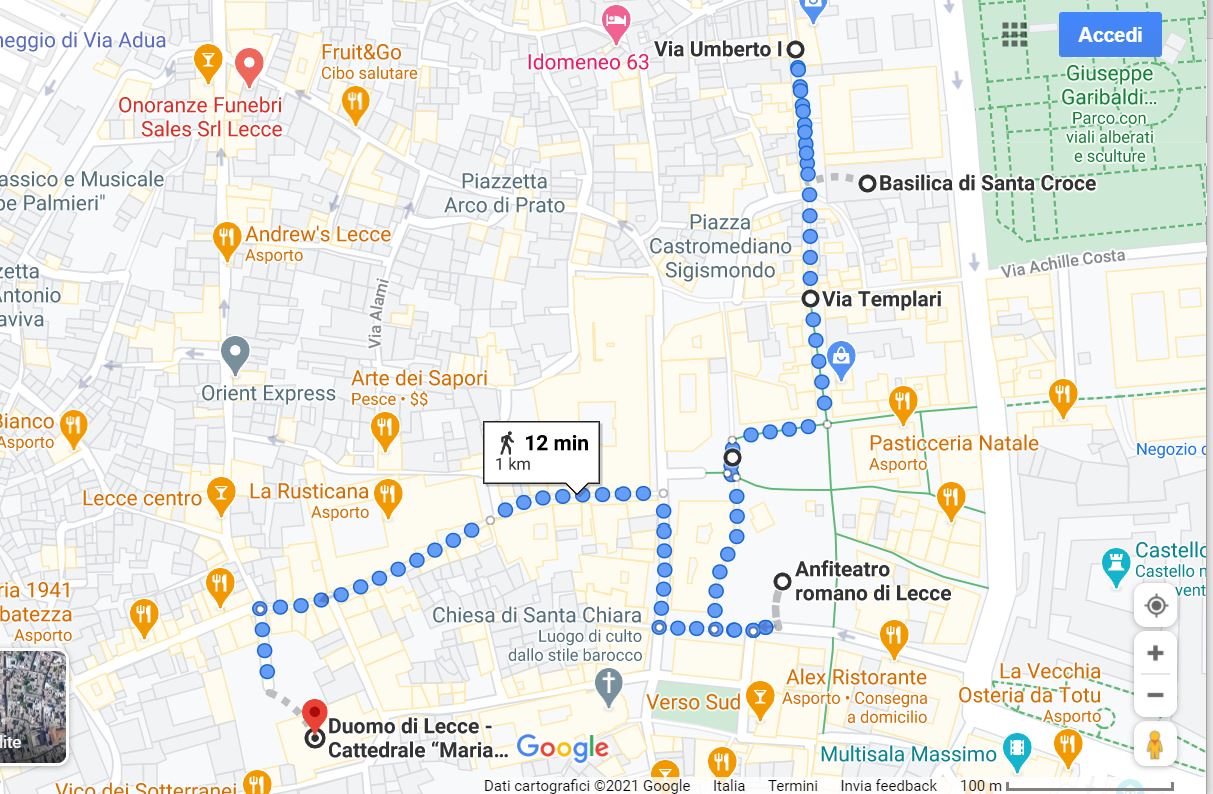
3) What to do in Lecce? LECCE CASTLE
Speaking of a castle, already on the borders of the city’s historical center, you can find the splendid Lecce Castle, a grandiose and massive construction strongly desired by Carlo V. For its construction, it was necessary to demolish a large part of the 13th century fortress, from which today there are almost no traces left. Originally, it was surrounded by a moat; today, there are structures made during the 19th century. Returning, pass by the beautiful Palazzo del Governo (“Government Palace”): it is a beautiful building, like all the others in Lecce.
Tip of the day
- Let your gaze “wander” through Lecce! Observe details, buildings, palaces and every bit of the city. It is impressive!
Map 02 – Attractions in Lecce
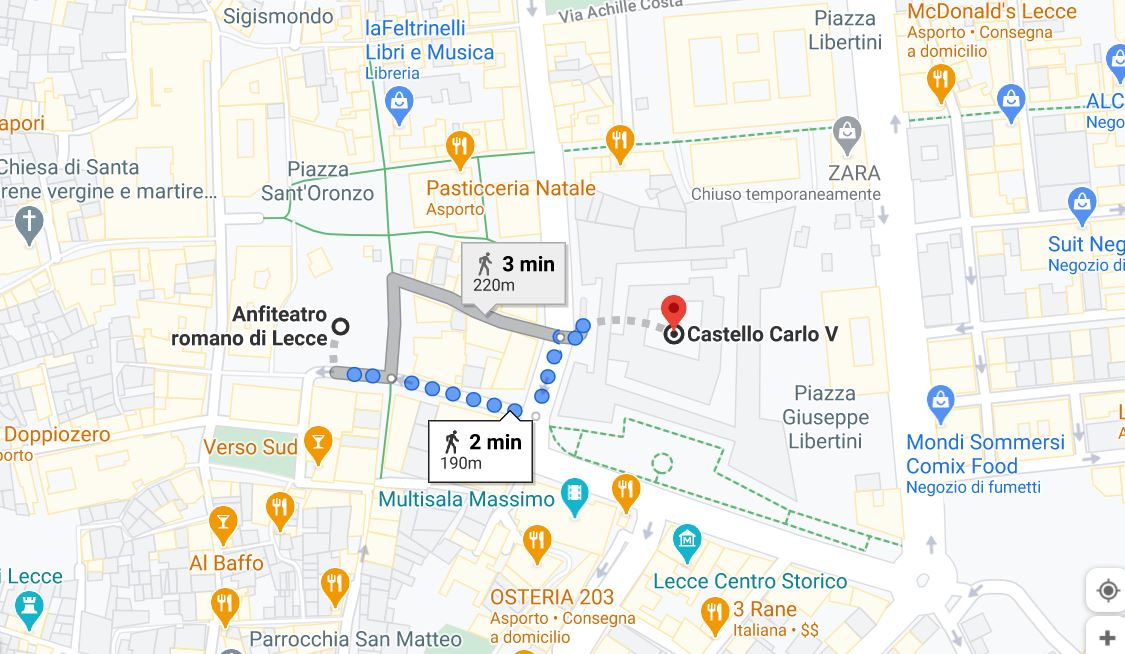
4) What to do in Lecce? THE FAMOUS PAPER MACHE
The art of papier-mâché, cartapesta (in Italian) or, simply, paper-mache, is a unique phenomenon in Apulia. It dates back to the period between the 17th and 18th centuries, when, with the development of the plastic arts linked to the multiplication of churches and monuments, artisans from Lecce found the art of “plasticizing” and “waterproofing” paper. They saw the possibility of creating a myriad of sacred works, which attracted the faithful who wandered through the region so much.
Alternative Materials
These artisans did not have valuable materials and needed to use alternative, less refined materials, such as straw, rags, glue and plaster, in addition to modest tools, but, above all, they needed to have patience, creativity and inspiration. The artisans reached the height of personifying saints and incredible figures and, often, only with their hands, thus, the paper mache was modeled and managed to interpret the desired feelings. The coloring made the statue “alive” and almost real and, thus, the works gained fame and prestige.
First in the Paper Marche Activity
Barbers were the first to experience the activity in which sensitivity and craftsmanship merge. These artisans used the back room of the barbershop as a laboratory and, between one haircut and another, filled their free time by modeling statues of paper mache. The oldest paper-mache collection known in Lecce’s history belongs to a barber: Mesciu Pietru de li Cristi, nicknamed this way for his vast production of crucifixes.
Creation of the Sacred Statues
Currently, the production of paper-mache, which in the province of Lecce is concentrated exclusively in the capital, is undoubtedly the result of handicrafts very close to the pure expression of art and sensitivity. Its objective is to create statues that reproduce sacred items, and they are even made in natural size, which requires impeccable technical and artistic skills, as items such as static or dynamic position, realistic figuration, faces with devout expressions, compact, painful or happy, that is, it is a job full of emotional suggestions, and must be cured in every detail.
In recent decades, thanks to the approach of this art by young people, production has taken new paths, but without leaving tradition aside. Today we already find new and varied models that depict, in addition to sacred items, dolls, furniture, masks and toys.
How are works done on paper-mache?
Visiting a paper-mache workshop is like reading a precious, unique story! A work begins with a bundle of curly straw, which gives the rough shape of a spun iron core. Hands, feet and head are made separately, with clay, and only afterwards you start using paper-mache, which must be done carefully. Thus, little by little, the figure is dressed with several sheets of paper, glued layer by layer with flour glue, to which is added a pinch of copper sulphate to repel the worms. The old masters added alum to the flour, effective against mold.
Drying is done in the open air or in the sun, and thus the first stage of the process is concluded. However, for the drying to be faster, there are some secrets: the “trade secrets”, which artisans almost never reveal. The preparation of the glue, apparently is carried out only with water and flour, but one must include some mysterious “ingredient”, because when this mixture boils it releases an inexplicable smell of cedar and incense, wonderful, I must say!
The Main Secret
The old masters of paper-mache say that concentration is the main secret of those who work with paper, so small red-hot spoons are used to fix the movements or folds that have undergone changes during drying and, thus, consolidate the structure of the sculpture.
Before completing the work, one can use a material called “pearl glue”, another hardening substance that facilitates the work and that turns into a reddish yellow veil, able to highlight the tones of the paper. Finally, the work goes through a process that requires a lot of experience and the use of a more suitable and specific material, plaster. One of the artisans’ favorites is the simple plaster with the “Bologna plaster”, as it is not very porous and is not very absorbent, excellent as a base for colors and gilding. Finishing works are carried out, including grouting, sandpapering, coloring and decoration of details. The most used paints are oil paint, but some professionals also use acrylic paint.
Useful information
A must-see in Lecce for lovers of paper-mache is the Museum of Paper-Mache. There you will find countless examples of incredible works made of paper-mache in different shapes and models.
If you want to visit a studio, you can choose to:
- Atelier Carmen Rampino – Piazzetta Gabriele Riccardi, 6 – Lecce.
- Mario di Donfrancesco – Via F. D’Amelio, 1 – Lecce.
Where to eat in Lecce?
L’Angolino di Via Matteotti – with delicious sandwiches, offers a huge variety of fillings – quite hearty – in a very pleasant environment. It is worth visiting!
- Where is it: Via Giacomo Matteotti, 31 – Lecce.
- Hours: Tuesday to Sunday, from 11:00 am to 3:00 pm and from 6:00 pm to 11:00 pm.
How to get to Lecce?
1) How to get to Lecce? BY AIRPLANE
As it is located on the coast of Italy, it is easy to reach Lecce throughout the territory of the boot. It is very accessible both by train and by plane. As it does not have an airport (the only Apulian city), it uses the neighboring airport of Bríndisi, about 40 km from Lecce, therefore well connected to all major Italian airports.
Also read our Special Posts on Airports in Italy:
- HOW TO GO FROM THE ROME AIRPORT TO THE CENTER OF ROME?
- HOW TO GO FROM THE MALPENSA AIRPORT TO THE CENTER OF MILANO?
- HOW TO GO FROM VENICE AIRPORT TO VENICE CENTER
2) How to get to Lecce? BY TRAIN
Countless trains from various Italian cities arrive at Lecce station. The Salentine capital is the terminal of the Adriatic route that comes from Milan or Turin and passes through Bologna, Pescara and Bari. There are also many connections through Rome, with Eurostar trains, but also with buses.
Did you know that Trenitalia is the main Italian company dedicated to the management of railway transport? Also find out “What is the difference between trains in Italy?”. Would you like to save? So buy your ticket online in advance and save a lot, read the Post “How to buy a train ticket in Italy?“.
Watch this video and learn: What is the average cost of a day in Italy?
Subscribe to our channel and receive more videos with information and tips about Italy. Don’t forget to leave that Like;)
Conclusion
What to do in Lecce? With unique charms and beautiful tourist attractions, Lecce deserves a visit at least once in life; but when you leave, be sure: you will want to come back! And if you feel insecure or have no time, and need help to organize your trip, do not hesitate to look for me! I will love to help you make your dream trip to Italy. And how can I do that? Continue reading this post until the end and you will understand how can we make your life and journey easier.
Did my post help you? If yes, make sure to leave your comment below, but if you still have questions, just leave them as a comment below and I will reply, O.K.?
An Extra Help for your Trip
The best content from Your Travel to Italy!
Learn more about our tours in Italy right now!
- What to visit in Italy in 10 days?
- The ten must-see places in Tuscany?
- The best tips to save on your trip to Italy?
- What are the 10 most visited cities in southern Italy?
- Airports in Italy? How to get to your hotel? (Venice, Milan, Rome, Florence)
- What to do in 1/2/3/4 days in the main Italian cities?
- The best tips on food in Italy (wines, typical food, enogastronomy tours)
- How to get from Fiumicino Airport to Rome downtown?
- Your Travel to Italy: 10 tips for traveling through Italy!
Best regards from Italy

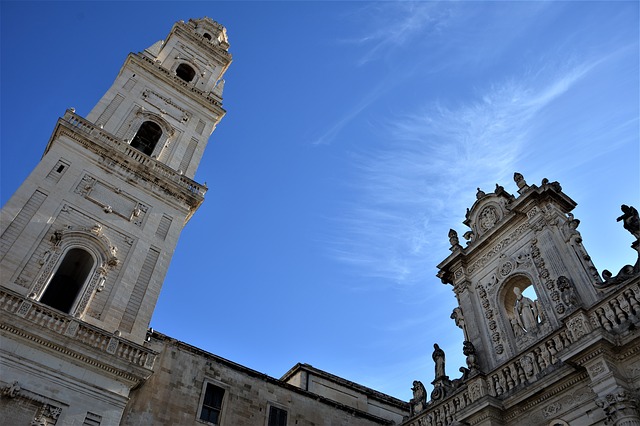
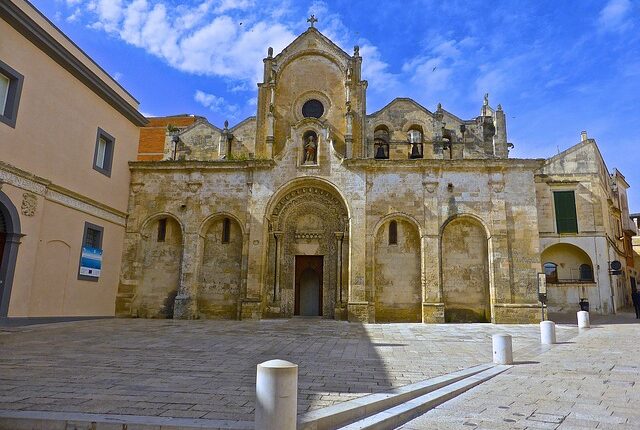
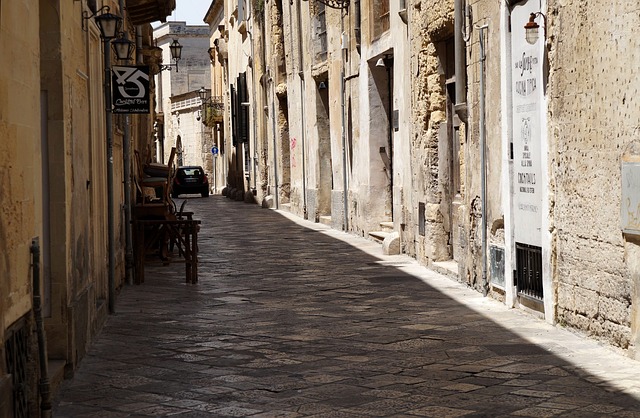
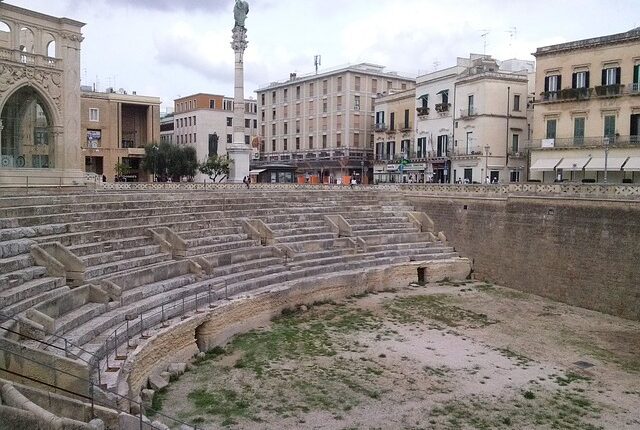
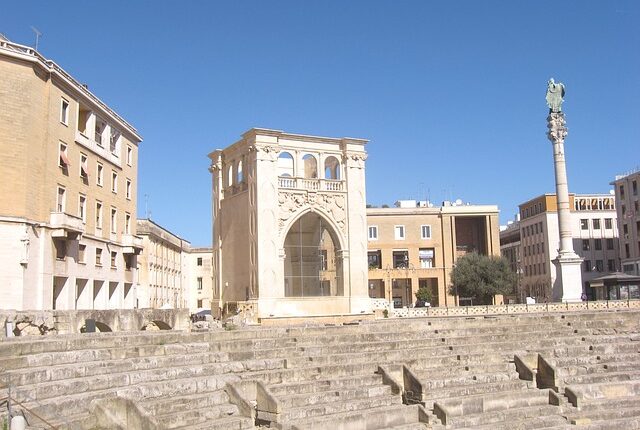
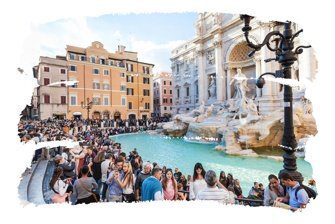
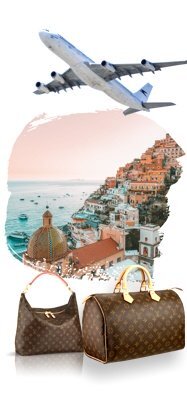
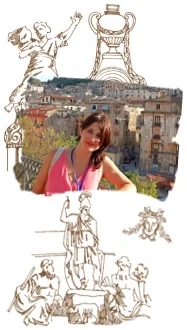

 Save money!
Save money!